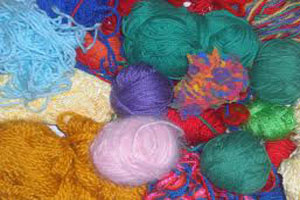
Wool prices expected to strengthen
YarnsandFibers News Bureau 2014-01-17 15:20:00 – AustraliaThe wool recorded six consecutive weekly gains from early November until the Christmas recess.“ In the first week of wool auctions this year, the Eastern Market Indicatore (EMI) has held its ground at around 1130 cents/kg. This was despite a strong offering of 53,000 bales said National Australia Bank’s Head of Agribusiness for South Australia and Western Australia, Matt O’Dea.“
In the Eastern Market Indicator (EMI) five per cent rise in wool prices is tipped for 2013-14.
Looking at export demand, China remains the single largest market for Australian wool, accounting for over three quarters of all exports in 2012-13.” In 2012-13, the volume of wool exported to China increased by 12 per cent.
However, a 14 per cent decline in prices during this period saw the total value of exports fall by five per cent. This was due in part to poorer demand for Chinese woollen exports from larger consumer countries in the European Union and the United States (US).
However, it was partly counteracted by China’s growing domestic demand for finished woollen products, which increased six per cent during the same period.
China now consumes around half of the wool garments it produces, putting it on track to overtake the US as the world’s largest apparel market by 2017.“While demand for ultrafine and superfine wool has been subdued since the Global Financial Crisis, new knit market development and new blends with silk and cashmere are offering additional opportunities for shorter wools, ” Mr O’Dea said.“
Looking ahead, in the near-term it is believed that the momentum in the demand for Australian wool exports will continue, supported by a generally improving global economic environment, historically low interest rates and a softer Australian dollar, which benefit wool exports.
Market Intelligence
Ask for free sample Report

experience
Customer Base
dedicated team
Countries Served Worldwide









